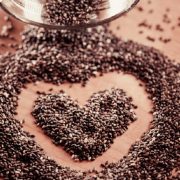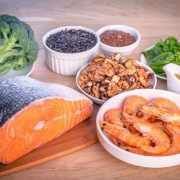
Image source: www.nutrition.com.sg
I believe that many of you have heard about the healthy eating pyramid. And as you know, healthy eating pyramid consists of 4 levels. At the bottom of the pyramid are placed cereals and cereal products, the next step was a place for fruits and vegetables, above them lies the milk and milk products and meat, fish, eggs, beans and nuts, while at the top of the pyramid fats, oils and sugar. From the bottom to the top of the pyramid, the amount of food decreases.
Here is how (all amounts related to the daily intake):
- Cereals and cereal products 6-11 servings
- Vegetables 3-5 servings
- Fruit 2-4 servings
- Milk and dairy products 2-3 servings
- Meat, fish, eggs, and more from the group 2-3 servings
- Fats, oils, sugar occasionally
A serving size varies from group to group.
A serving size for cereals and cereal products:
- 1 slice of bread (about 30 g)
- muffin or a piece of cake (about 55 g)
- 30 g of cereal for breakfast
- 1/2 cup of cooked cereal, rice or pasta
- 3 cups of popcorn without additives)
For vegetables are serving the following sizes:
- 1 cup fresh spinach, lettuce and other leafy vegetables
- 1 cup raw carrots, potatoes and cucumbers
- 1 cup cooked vegetables
- 1 small baked potato
- 10 French fries
As for the fruit, the sizes of one serving include:
- 1 slice of watermelon
- 1 medium piece of fruit
- 2 pieces of fruit a smaller size
- 12 grapes
- 1/2 cup of berries
- 3/4 cup of freshly squeezed
- 1/4 cup dried fruit
Recommended portion size for Milk and milk products is:
- 1 cup (2.4 dL) milk, yogurt or similar fermented milk drink
- 45 g of cream cheese
- 55 g of hard cheeses
- 3 cups of ice cream
Amounts of meat, fish, eggs, and whole group protein-rich foods are:
- 55-85 g of cooked lean meat or fish
- About 55 g salami
- 1 small hot dog
- 1 egg
- 1 cup (about 30 grams) of cooked beans, peas, beans, soybeans and other legumes
- 2 tablespoons (about 30 g) of nuts
But let’s get back on topic. So much for the amount of fruits and vegetables that we should consume on a daily basis.
In addition to consume them in sufficient and recommended quantities, it is essential how you prepare them.
For example, vegetables that you cook in water, it is advisable not to squeeze, but put enough water, because otherwise you will drain the water, and throw all the vitamins and minerals that are soluble in water (this is particularly true of vitamin C, and sodium).
Therefore, the most desirable way to prepare vegetables is steaming. In this manner of preparing meals, all nutrition that vegetable has, stay inide the box, and the taste is the same as it was cooked in water, if not better.

Avoid frying vegetables in hot oil because it absorbs a lot of unnecessary fat. Also season it with less oil when you can eat that meal fresh (exception to this is olive oil). Fruit is best when eaten fresh. When it is canned in syrup for example, then we take extra sugar, which then increase our daily energy intake. That means that we have to spend more. Also in fresh fruits and vegetables, there are many photochemicals in the form of pigments and poly-phenols. These substances are present in plants that have a possible protective effect for health, although not essential.
Both two groups of foods are rich in dietary fiber to facilitate digestion and maintain intestinal motility.
Dried fruit, however, is rich in unsaturated fatty acids, but despite that it is not desirable to exaggerate its consumption because – fats are fats – always yield 9 kcal/g
From all of the above, you can see that the fruits and vegetables are desirable food – rich in vitamins and minerals (and this is not just a classic phrase). The important thing is to try to respect that.












